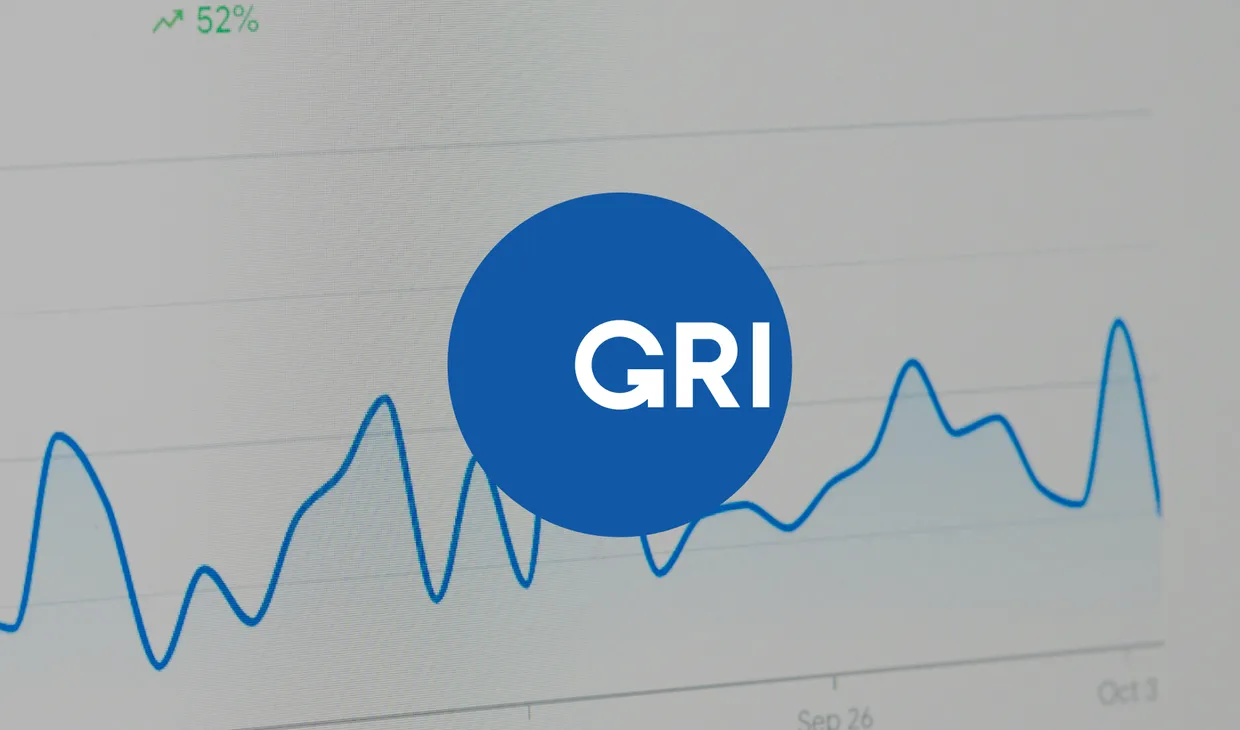Marie-Anne Vincent, our VP of Climate Finance, explains what the new EU rules mean for your company and how to get ready to accurately report your carbon and ESG data.
On January 5, the Corporate Sustainability Reporting Directive (CSRD) came into force across the EU, with almost 50,000 companies impacted. They now must prepare to comply, seize the opportunity to transform, and start to organize themselves, as the various CSRD requirements for reporting will require a great deal of data collection and formatting work on the part of most companies.
What's the main objective of the Corporate Sustainability Reporting Directive (CSRD)?
The Corporate Sustainability Reporting Directive will allow companies to publish a harmonized sustainability report facilitating the work of responsible investors to collectively transition towards a green economy. The Corporate Sustainability Reporting Directive is in line with the Sustainable Finance Disclosure Regulation (SFDR) and the EU Taxonomy Regulation.
This move takes significant steps toward the goals of the European Green Deal, and to make the EU continent climate-neutral by 2050.
Which companies are covered by the CSRD?
The CSRD applies to more than 50 thousand companies which collectively make up around 75% of business in the European Economic Area (EEA).
Large companies
The CSRD classifies a large company as one that meets at least two of the criteria listed below:
-
> 20M€ Total Assets and/or,
-
> 40M€ Net turnover and/or,
-
> 250 employees
The following businesses are also covered by the regulation:
-
Companies listed on the stock exchange
-
International and non-EU companies with more than €150M annual revenue within the European Union will also be subject to mandatory reporting.
Small and medium enterprises (SMEs)
The CSRD imposes no additional reporting obligations on small companies, except for those listed on regulated markets. For listed small and medium-sized enterprises (SMEs), simplified standards are available to facilitate reporting.
The CSRD does not apply to non-listed SMEs. But the European Commission has suggested creating specific sustainability reporting standards for non-listed SMEs that they can voluntarily adopt. These standards would be tailored to fit SMEs' capacities and would simplify the reporting requirements, making it easier to provide sustainability information to investors, clients, and banks. Note also that micro enterprises are exempt from the regulation.
What are the CSRD Reporting Requirements?
The CSRD requires companies to report on their sustainability performance in a more comprehensive and consistent way. Specifically, it requires them to disclose information on these sustainability measures:
-
Environmental matters, including greenhouse gas emissions, water use, and biodiversity;
-
Social matters, including human rights, labor practices, and diversity;
-
Governance factors, including anti-corruption policies, board diversity, and executive pay;
-
Business model-related information, including information on supply chain sustainability and product life cycle.
They will also need to outline how sustainability issues affect their business.
Where should companies report?
Under the Corporate Sustainability Reporting Directive, companies will be required to include sustainability information in their management report, which will be published alongside financial information. To ensure comparability, this sustainability reports will need to be submitted in a standardized digital format and stored in the European single access point database (using the European Single Electronic Format).
Note that the CSRD includes provisions for reasonable assurance on sustainability reporting, which means that companies will need to obtain an external auditor's statement ("limited third-party assurance") on the reported information. There is a range of independent assurance services providers to choose from.
Why was the CSRD introduced?
The introduction of Corporate Sustainability Reporting Directive came as a response to the shortcomings of its predecessor, NFRD, which only applied to a limited number of organizations. The CSRD sets more comprehensive inclusion criteria, addressing the vagueness of reporting requirements, inconsistent data, lack of climate disclosures, and the non-compliance issues of NFRD. This move towards standardized and easily accessible data will help to create a more equitable EU financial system, allowing stakeholders to make better-informed decisions. Importantly, the European Commission believes that it will help to promote sustainable investment.
On December 16, 2022, the final text of the Corporate Sustainability Reporting Directive (CSRD) was published in the Official Journal of the European Union, replacing the current Non-Financial Reporting Directive (NFRD). The new directive came into force on January 5th, 2023.
EU Member States have 18 months to transpose it into their national law (by July 6, 2024 at the latest). This transposition will be the final step to specify the scope of the CSRD requirements and its implementation schedule.
In the long term, the Corporate Sustainability Reporting Directive aims to require companies to contribute to Europe's 2050 climate-neutrality target and the European Green Deal's objectives by fostering a globally competitive and resilient industry, renovating energy-efficient buildings, using sustainable investments and promoting cleaner energy and cutting-edge clean technological innovation. The EU has been a champion of a sustainable economy, and the introduction of CSRD strengthens its commitment towards these goals by building upon the current European sustainability targets and reporting standards.
How does the CSRD compare to the Non-financial Reporting Directive (NFRD)?
The Corporate Sustainability Reporting Directive is a revision and an expansion of the existing Non-Financial Reporting Directive (NFRD). While the NFRD required large companies to disclose their sustainability information, the CSRD extends these requirements to all large companies and introduces more detailed and standardized reporting requirements. In contrast to the NFRD, the CSRD also includes specific disclosure requirements related to climate change and other sustainability risks.
|
Questions |
NFRD |
CSRD |
|
What’s the applicable timeframe? |
30 July 2017: NFRD signed August 2017: Inclusion of nonfinancial and board diversity matters for periods beginning on or after 1 August 2017 |
December 2022: Adoption EU-Directive in member states legislation 1 January 2023: First set of Sustainability Reporting Standards 2025: Reporting of Sustainability Metrics for 2024 and assurance over report |
|
Which companies are concerned? |
Large public interest entities with > 500 employees Public interest entities include: – – Listed companies – Banks and Insurance companies |
All large companies > 250 employees and/or > €40M Turnover and/or > €20M Total Assets Listed companies Non-EU companies with more than 150€ million annual revenue within the EU |
|
How many companies are in scope? |
11,700 Companies |
49,000 companies |
|
What are the reporting requirements? |
Companies are to report on: Environmental protectionSocial responsibility and treatment of employees Respect for human rights Anti-corruption and briberyDiversity on company boards (in terms of age, gender, educational and professional background) |
Companies are to report on: Business model and strategy incorporating sustainability matters and the impact of 1.5ºC temperatures in line with the Paris AgreementTargets and progress made to achieve those targets Roles and responsibilities of management Company’s sustainability policy including due diligenceAdverse impacts connected with the value chain (SCOPE 3!!)Description of principal risks related to sustainability matters Reporting in line with Sustainable Finance Disclosure Regulation (SFDR) and the EU Taxonomy Regulation Companies will need to provide: Qualitative and quantitative information Both forward-looking and retrospective information Information that covers short, medium and long-term time horizons |
|
Where should the information be reported? |
Included in the annual report |
Included in the management report which is generally included in the annual report |
|
Is third-party assurance required? |
Voluntary assurance |
Mandatory assurance |
|
What format should be reported? |
Online or PDF |
To be submitted in electronic format (in XHTML format in accordance with ESEF regulation) |
What is double materiality in the CSRD?
The concept of double materiality acknowledges that a company's sustainability impacts are not only relevant to the company itself, but also to the wider society and environment in which it operates. In other words, under double materiality, a company's impacts on the environment and society can also affect its own financial performance.
Under the Corporate Sustainability Reporting Directive, companies will be required to disclose information on social and environmental issues that are material to their business and that have an impact on the wider society and environment. This includes company management reports on the risks and opportunities related to climate change, environmental issues, social and employee-related matters, respect for human rights, and anti-corruption and bribery issues.
The CSRD will introduce a range of sustainability reporting standards, including cross-cutting standards, sector-agnostic standards, and sector-specific requirements, as part of the ESRS. The cross-cutting standards will deal with general ESG reporting provisions such as strategy and business model, value chain, and due diligence. The sector-agnostic standards will cover environmental, social, and governance areas of ESG, such as disclosures on climate change, energy consumption, and emissions. Meanwhile, sector-specific standards will offer guidance to companies based on the industry they operate in. The draft ESRS identifies 14 sector groups and 40 sectors and these sector specific standards will be finalized in 2023. The ESRS will also aim to incorporate SFDR PAI indicators.
Do companies need to report according to the European Sustainability Reporting Standards (ESRS)?
Under the Corporate Sustainability Reporting Directive, companies will be required to adhere to the European Sustainability Reporting Standards (ESRS) while reporting. The ESRS, which are currently in draft form, have been created by the EFRAG, previously known as the European Financial Reporting Advisory Group.
What are the key CSRD dates that you should be aware of?
If you're covered by the new directives, you should start putting in place the groundwork for data infrastructure and sustainability reporting procedures now to prevent any potential non-compliance issues. Here are some of the key dates that you should be aware of:
-
By June 30, 2023, the EU Commission is expected to adopt the first set of reporting standards.
-
Starting in 2024, requirements will be gradually introduced as EU law is implemented into the national law of EU member states.
-
From January 1, 2024, financial market participants and companies already subject to the NFRD will need to report on their 2024 data (for the reporting year 2025).
-
From January 1, 2025, other large companies that were not previously subject to the NFRD will have to begin reporting.
-
From January 1, 2026, SMEs will need to start reporting.
-
From January 1, 2028, third-country firms will be subject to the CSRD.
At the same time, the European Financial Reporting Advisory Group (EFRAG) is developing an initial version of sustainability reporting standards, known as the ESRS. These standards will be presented to the Commission for review once a legislative text has been agreed upon by the Parliament and Council. EFRAG has already released a preliminary draft of the CSRD standards in mid-2022, and public feedback is being sought.
Enforcement and penalties: Is the CSRD mandatory?
The sustainability reporting requirements of the CSRD are mandatory for the companies listed above. The CSRD proposal has suggested that member states should establish effective, proportionate, and dissuasive penalties for non-compliance. These penalties may include fines, public disclosure of the violation, exclusion from public procurement procedures, or other measures deemed appropriate by the member state.
Does CSRD help to reduce climate change?
The CSRD aims to increase transparency and standardization of sustainability efforts by mandating companies to report on their sustainability risk and performance. It is a crucial step towards achieving a climate-neutral continent by 2050. By holding companies accountable for their environmental impact, the CSRD incentivizes them to adopt more sustainable practices, ultimately contributing to the fight against global warming.
The European Parliament's endorsement of the CSRD highlights its commitment to addressing climate change and promoting sustainability in the business world.
What are the key benefits for businesses when it comes to the CSRD?
The Corporate Sustainability Reporting Directive can help bring a number of benefits to businesses. Firstly, it helps you to streamline and bring transparency to sustainability reporting, reducing the risk of greenwashing and providing clearer sustainability information for investors, customers and other stakeholders.
In addition, CSRD reporting can enhance your company's credibility and increase the chance of attracting external investment. By making climate reporting a standard practice and part of everyday business, CSRD encourages you to adopt more sustainable business models, take tangible climate action, align your plans with science-based parameters, and track your progress towards your sustainability goals.
Overall, while compliance with CSRD may seem like a regulatory burden, it can ultimately benefit businesses by improving transparency, enhancing credibility, and driving sustainable practices that are not only good for the environment, but also for the long-term success of the company.
What can you do to prepare for the CSRD?
There are several actions that you prepare for the CSRD, from allocating the right roles and responsibilities internally, to putting in place processes and systems to ensure you’re compliant. Here’s an overview of what’s needed:
Governance
Make sure that your board, senior management team, and various committees are all aware of their roles and responsibilities in relation to CSRD compliance – particularly when it comes to the areas of RSE, finance and internal control.
Provide training sessions for your employees that cover the fundamentals of CSRD, and what it means for your company and industry.
Norms and Methodology
The CSRD requires companies to show their alignment with key commitments, such as the Science-based targets initiative and to have ESG reporting in place, in line with key frameworks such as the Global Reporting Initiative (GRI)and the Task Force on Climate Related Financial Disclosures (TCFD). So be prepared to demonstrate this. They should also ensure that they stay on top of the latest disclosure regulations, as these are regularly updated.
Companies are also asked to conduct a materiality assessment to determine the sustainability topics that are most relevant to their business and stakeholders. Your materiality assessment should take into account your company's business model, strategy, risks, opportunities, and stakeholder expectations. The assessment should also consider the impact of sustainability issues on your company's financial performance and reputation.
Finally, make sure that you’ve defined the timescales for achieving particular steps.
Processes
Establish systems for data collection and analysis that will enable you to measure and report on key sustainability metrics. This may involve collecting data on greenhouse gas emissions, energy use, waste generation, water consumption, and other indicators.
Make sure that all your existing processes are updated to include Scope 3. You’ll be asked to demonstrate that you’re collecting emissions’ data from the whole organization, including affiliates.
Put in place adequate internal controls to ensure the accuracy and reliability of your sustainability data. This may include regular audits and verification of data by third-party experts.
Systems and Data
Implement a robust, agile strategy for sourcing sustainability data from across your company – and update this as needs evolve and data quality improves.
Make sure that this data is integrated into your existing information systems (both whole-company systems and ESG-specific ones).
Where possible, automate your data collection and reporting using dedicated climate tools.
How can Sweep help with the CSRD?
The CSRD ready-to-use questionnaires developed by our experts enable you to efficiently gather all the disclosure related data you need. We ensure transparency and help you save precious time thanks to automation and digitalization.
Make sure you’re up to speed when the regulations enter into force – skip the headache and let the platform manage all the calculations and aggregations for you.
The tool is easy to use for you and your portfolio companies with all the support and guides you need to kickstart your journey.
Find out more about how we can help you stay compliant.




